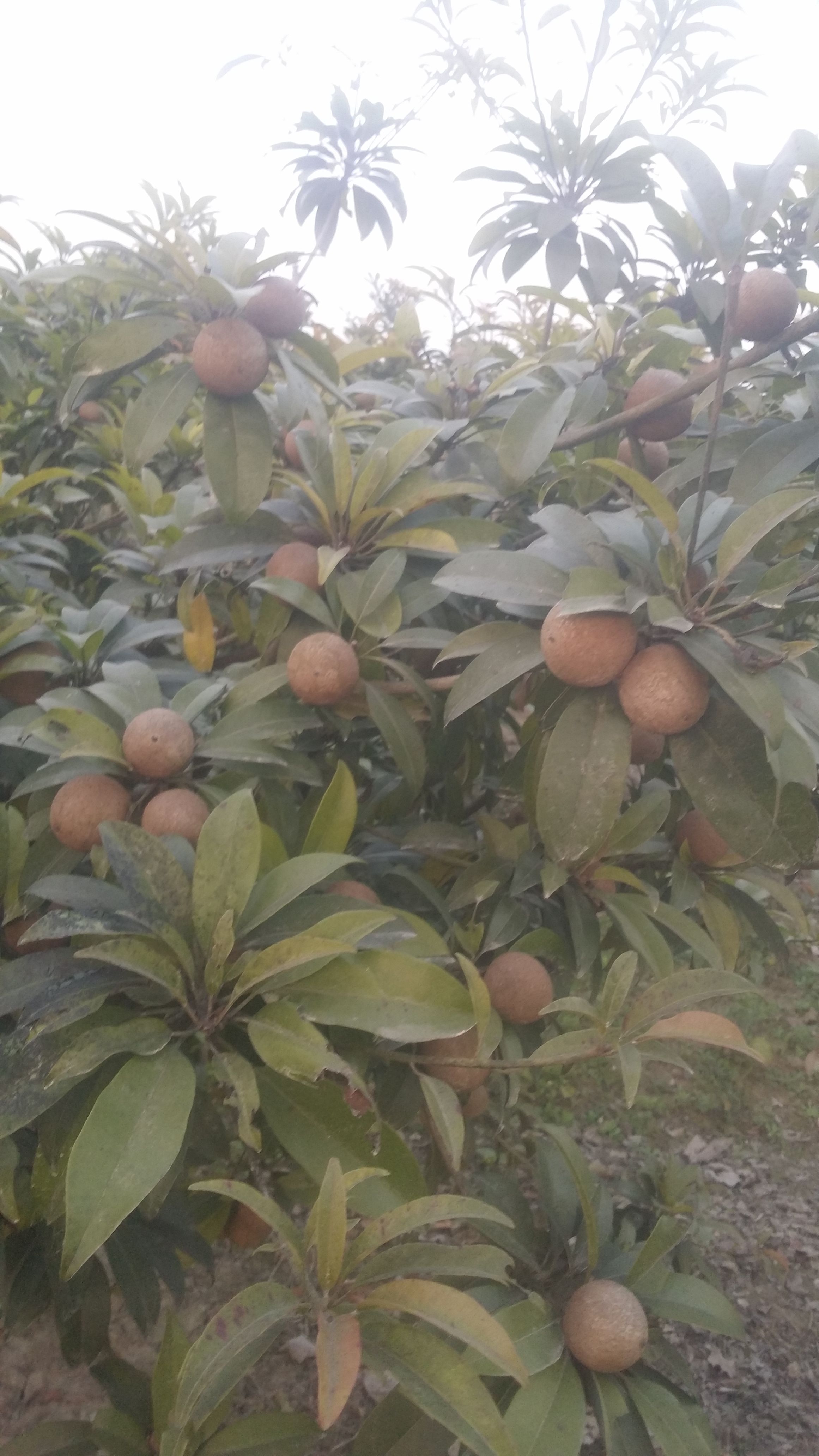"The cultivation of saphada fruit" in the courtyard of the house.

The saphida trees can be planted in the courtyard of the house, pond, roads, garden, everywhere. It can be grown in highlands and mountainous areas. An adult sapada tree produces an average of 80 kg sapida per year, but the current market price will be Tk 50 per kg as well as Tk 4,000. 300 sapda trees can be planted in 1 hectare land - from which annual sale will be 12 lakh taka. The cost of 1 hectare will be 6 lakh taka. It is possible to make real income of Tk 6 lakh apart from the cost. It is possible to plant sapada trees by proper initiative and fulfill the country's fruits and nutritional deficiencies and create employment.The sapda tree produced from pen saplings is up to 25 feet high. Sofa leaves are evergreen and lovely. The leaves range from 2 to 5 inches tall. The sofa tree is quite hard and lasting. Sophisticated perennials. About 700 species of saphida are produced in the Serpenti. The United States and Mexico are believed to be the proven species of shedda. At present, sophida is cultivated in most of the tropical countries. Sofa is the most produced in any region of India, the Philippines, Sri Lanka, Venezuela, Mexico, Brazil, Central America, and Africa. This fruit is grown in almost all the districts of Bangladesh, but its amount is not very much. There are commercial production of shedda in greater Barisal district, Gazipur, Khulna, Jessore, Satkhira and Chittagong districts.
Cultivable varietiesThere are about 6-7 local varieties of saphida cultivated in different regions of Bangladesh. Saphanda, developed by the Bangladesh Agricultural Research Institute, has two advanced varieties namely (a) Bari Saphida-1, (b) Bari Safida-2. These two varieties are most suitable for cultivating everywhere in Bangladesh. Bari shedida-1 variety was approved for cultivation in 1996. This improved variety has regular results. Each of its fruit weight is 80-90 grams. High yielding Bari Saphida-2 variety was approved for cultivation in 2003. Regular results are available from this species. Each fruit weighs 70 to 100 grams. The yield of 80-90 kgs is available from every tree of 8 years of age.Plant productionPropagation of shedders is possible through both seed and pen directly. Prostate can be transmitted in an artificial way through graft pock, weld pen and eye pen. In Bangladesh, there is a transplant through seeds and twisted pens. The vitality of sapada fruit seeds is maintained for many years. Seeds have to be planted deep in the same seed. It takes about 1 (one) months to sap from the seed. When 2-3 leaves of the leaf leaves out, it should be lifted up to the specified place. Khartoni trees are used as rootkuks for graphing or welding pens. Mahua and Bakul trees are also used. The sapada plants are found in pots on the Kharini tree and they start to produce fruit in 3-4 years. On the other hand, it takes 6-7 years to produce fruit from seed produced.Planting PlantsSoftener sapling can be planted on a flat land following square or hexagonal method. For this reason, the distance between the rows and the seedlings of the seedlings is 5 meters or 16 feet and the size of the hole will be long, wide and 75 centimeters in depth. The most suitable time for sapda plantation is from May to July. But saphida saplings can be planted at other times of the year. Before planting in the hole, the soil is neat and neat by cultivation and ladder. 15 days before planting, 10-12 kg of dung fertilizers, 500 grams of Khayl, 200 grams of urea, 100 grams of TSP and 100 grams of MP fertilizer should be filled with soil mixed in every hole. In the middle of the hole, the sapada plant will be put in a straight line. After planting the plants, two bamboo poles can be tied to the two sides of the hole to keep the tree straight. Besides, water irrigation is necessary as well.AttendAfter 6 months of planting sapida, after planting the sapada, it will be well mixed with 15-16 kg rotten cow dung, 500 g dry dough, 500 g urea, 300 grams of TSP and 500 grams of MP fertilizer soil with good soil looped around each tree. If the irrigation required during the drought, the yield is good.Pest and diseaseIn the saphida tree, it is usually noticed that the stricken insects, leaf crackers and one type of white drying insect attack. The absorbing insect leaves and leeks absorb. Besides, fruitful pests of pests and pigs are found on ripe fruit. This croak grows inside the ripe fruit and destroys the fruit. The caterpillars destroy the tree leaves, flower buds and ticks and destroy them. The IPS method can be followed in order to suppress these insects. To suppress them, 15-20 ml of malathion or dyamikron 10 liters of water mixed with water will be sprinkled. Besides, there is no significant disease of saphidaa.Collection of fruitsIn our country, saphida trees bear fruit all year round. However, in the month of Ashwin-Kartik and Boishakh-Jayantha, fruits have been noticed. The time is right to collect fruit when there is a little orange in the fruit shell. If the fruit is nutritious, it is better to pour all the fruits together from the tree. Ripe fruits are suitable for eating at a temperature of 32-35 degrees Fahrenheit for about 1 month.